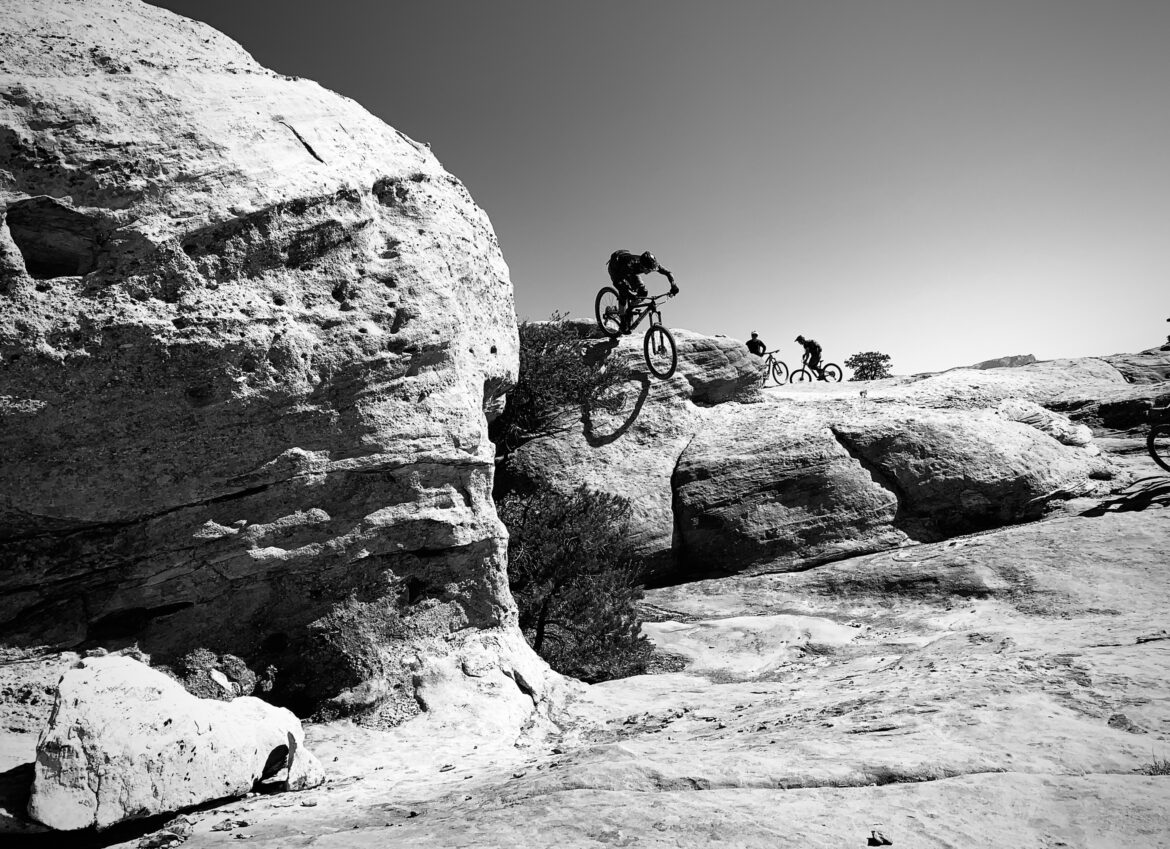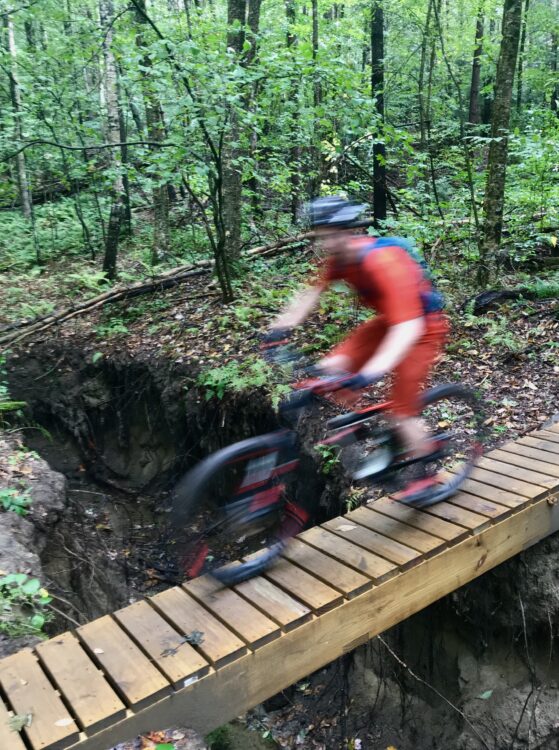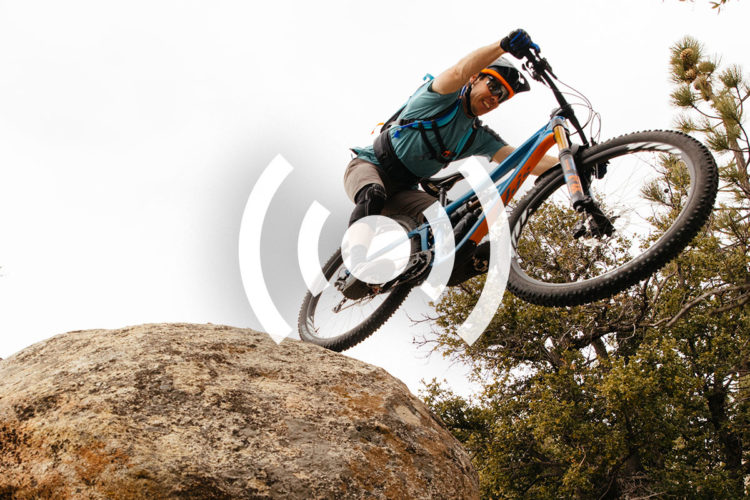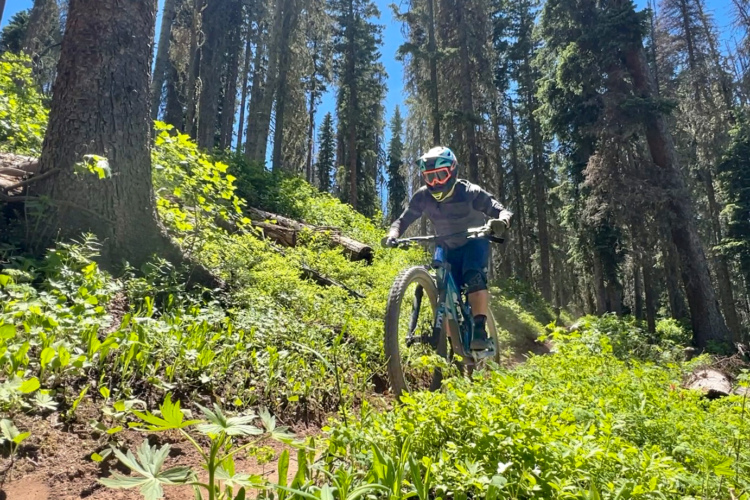
Car Climb, Nessie, Gravity Well, and the Hill of Death. These names belong to a few high-risk features on my favorite local trails. Some of them I ride frequently. Others I avoid. The choice depends on whether it’s worth the risk.
All riders make the same choice for themselves every time they hit the trails. My choices change from one ride to the next, depending on how I feel and what the trail conditions are like. In general, I avoid features with high consequences for crashing. It’s not that I don’t enjoy the rush I get riding them, but there are other factors involved that lead me to stay off them.
The benefits have to out-weigh the consequences
I don’t ride features to show off or earn a living. Instead, I choose to ride certain high-risk features because I believe they help me become a better rider. They make me focus on braking, balancing, and bike handling. I have seen a measurable difference in my riding abilities after I started tackling them.
I have also gained a lot of self-confidence from the features I ride. I remember the first time I descended Car Climb. I looked at it every time I rode the trail it was on. I walked down it a few times, and tried to picture myself going down it. I did this for a few months. Then, one day, I went for it.
I was scared to death as I rode, and hung on to my handlebars for dear life. But I cleaned it and was so stoked that I did. I learned a lot about descending from that feature, and now it’s a blast.
On the other hand, I avoid riding skinnies because I don’t gain any benefit from them. Attempting to ride a skinny, even one that is only a few inches off the ground, is nerve-racking and my bike and myself have been wounded by them. My heart rate climbs as soon as I see one. If I manage to convince myself to try it, I inevitably slow down too much at the start, my bike starts wobbling, my eyes start to look to one side or the other, and I roll right off them. On the occasions where I have ridden skinnies successfully, I feel relieved, not happy.
Sure, riding skinnies could help me become better at balancing on the bike, but there are other things I can do to work on my balance that are more enjoyable and less risky than riding a skinny, like track-stands or following the lines on a basketball court.
Injuries happen
I don’t think about crashing when I choose to ride a feature. Instead, I believe I won’t crash. But the reality is that crashes can happen, and anyone can get injured. While injuries aren’t fun, they can be a learning experience.
I’ve only sustained two injuries since I started mountain biking 10 years ago. I don’t count all the scrapes, bruises, and minor cuts as injuries. I first injured myself attempting a small drop known as Yoda’s Hut, which is part of a very rooty and technical trail here in town. I went over the handlebars and face-planted into a root. The crash and resulting injury destroyed my confidence and as a result, I rode too cautiously afterward. After riding overly-cautious for a year and not getting the same amount of joy from my rides as I did before the crash, I decided that I would rather have fun and risk being injured than be safe and ride less challenging trails. I’ve since cleared that same drop numerous times.
My second injury occurred while I was riding Nessie. Nessie is a three-humped wooden bridge with a big dip at the end of it, giving the sensation of riding a roller coaster through the woods. I fell from the top of the third hump and landed on my outstretched right arm about six feet below, hyperextending and severely spraining my shoulder. In contrast to my first injury, I never thought about not riding Nessie again. Instead, I focused on recovering from the injury so I could get back to riding it as quickly as possible. I can still remember how stoked I was the first time I cleaned the feature after the crash. I grinned from ear to ear and pumped my fist in the air. That second injury helped me become an even better rider than I was before the crash and I took on even more challenges.
There are times when I would rather take risks than live with regret

I started riding in the dark a few years ago. I found it was easier to get more rides in if I did them first thing in the morning before the sun came up. It was also a great way to escape the blistering heat of Florida in the summer. Riding in the dark was scary at first. I never liked the dark, and my brain repeatedly conjured up images of all the things that could happen to me or animals that could attack me while I was in the thick of the woods. Yet, it took only a few rides before I was hooked.
Today, I can’t imagine not riding in the dark. Pre-dawn rides have allowed me to experience a whole new side of nature. I’ve encountered deer, fox, raccoons, armadillos, possums, rabbits, owls, and coyotes on my local trails. Having just a tunnel of light to guide the way makes the ride so much more exhilarating. Had I not overcome my fear and taken the risk of riding at night, I would have always regretted it.
Last year, my riding partner finally convinced me to go down a particular descent. I kept bowing out of riding it, and I would walk my bike down it instead. Every time I did so, I studied it and got angry with myself because it didn’t look that bad when I walked it. It ate me up to the point that I knew I had to do it, and I’m glad my buddy egged me on.
There are other features on our local trail that I don’t regret avoiding. The Hill of Death is one such feature. It gives you two options. You can either do a massive drop down a very steep hill or ride down a steep rock garden. Either one has big consequences if one were to crash. I still have plenty of other features I can ride that are just as fun and less risky. One day, I might get up the nerve to try it, but if I don’t I won’t regret it.
Aging makes one consider the bigger picture
When I was in college, I did a lot of street-style inline skating. I would skate five or six days a week for a couple of hours at a time. I loved jumping off flights of stairs, grinding railings, and other stunts. I was living in the moment. With some foresight, I might have realized such extreme skating would eventually take a toll on my body. Today, my knees still express their displeasure at the way I treated them back then.
I love the excitement of riding risky features, but I love the thought of being able to ride for the next few decades even more. I am a mountain biker because I enjoy riding and because the sport has done wonders for my mental and physical health. My long-term goals as a rider are to keep riding and to share those experiences with others, especially younger riders. I don’t want to sustain injury after injury, and have to spend more time off my bike than on it.
It’s a shame social media and some industry publications suggest that riders should take a lot of risks in order to be a “real” mountain biker. Most of the riders featured on those platforms are professionals who take greater risks because they are paid to. I have no aspirations of a career as a rider, and I don’t want to do anything that would diminish the quality of life I currently enjoy.
Instead, I shy away from certain high-risk features, and instead prefer riding fast over features that are well within my comfort zone. I push myself to lower my times and lengthen my distances. That’s what makes mountain biking fun for me, and I believe that having fun on two wheels without putting your life on the line is the true essence of the sport.






















6 Comments
Nov 10, 2020
Nov 10, 2020
I currently have a couple features that I haven't mustered the balls to go for, and I think thats natural. At some point you've done enough things that you think are close enough and decide to try it.
Your inhibitions are there for a reason and are probably valid. If you're laying in bed thinking about whether you should just go for it tomorrow morning, then you're probably close. You've gone over it 100 times in your head already... maybe tomorrow is the day. Bring your pads!
Nov 9, 2020
Nov 9, 2020
Nov 16, 2020
Nov 16, 2020